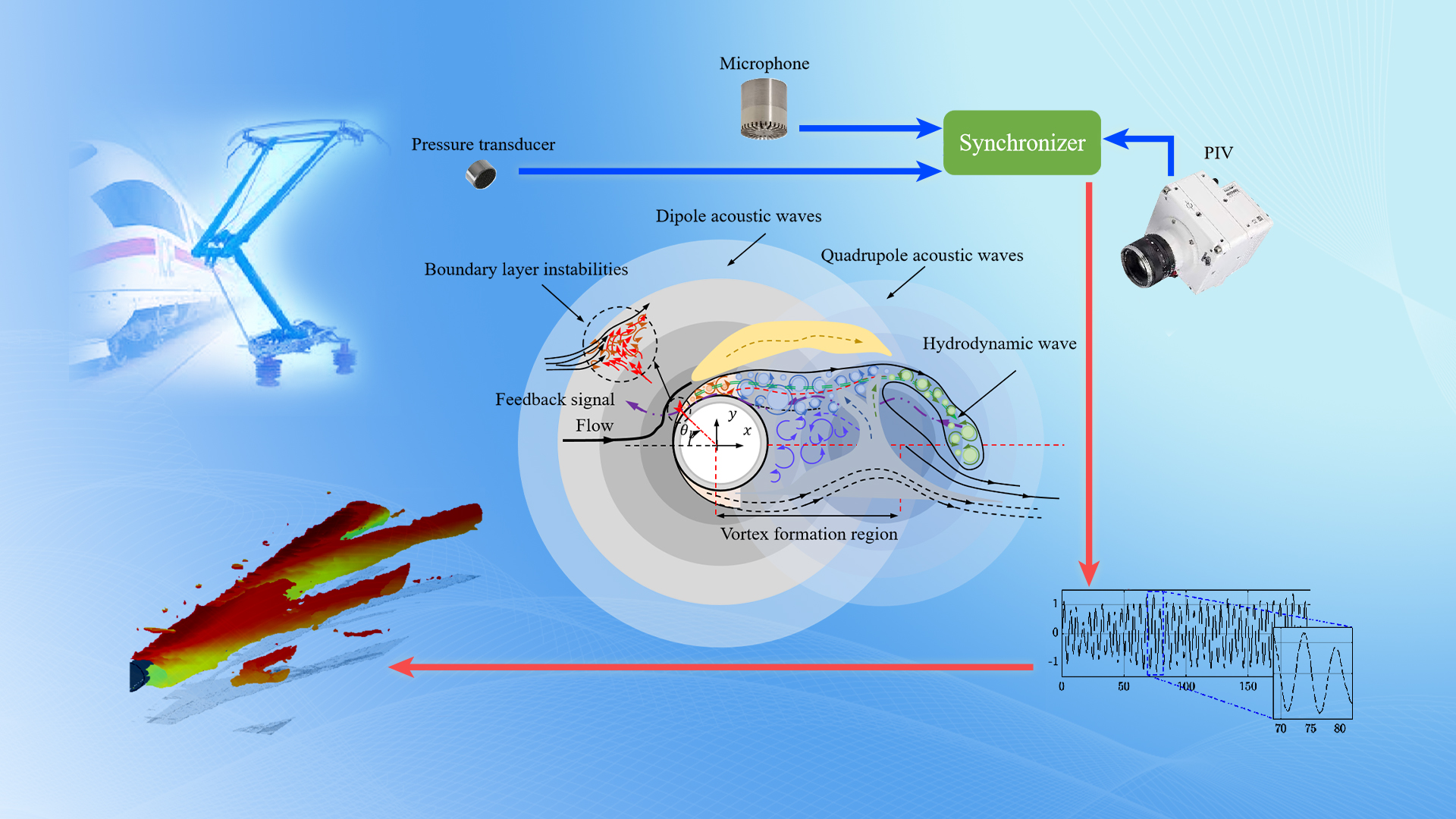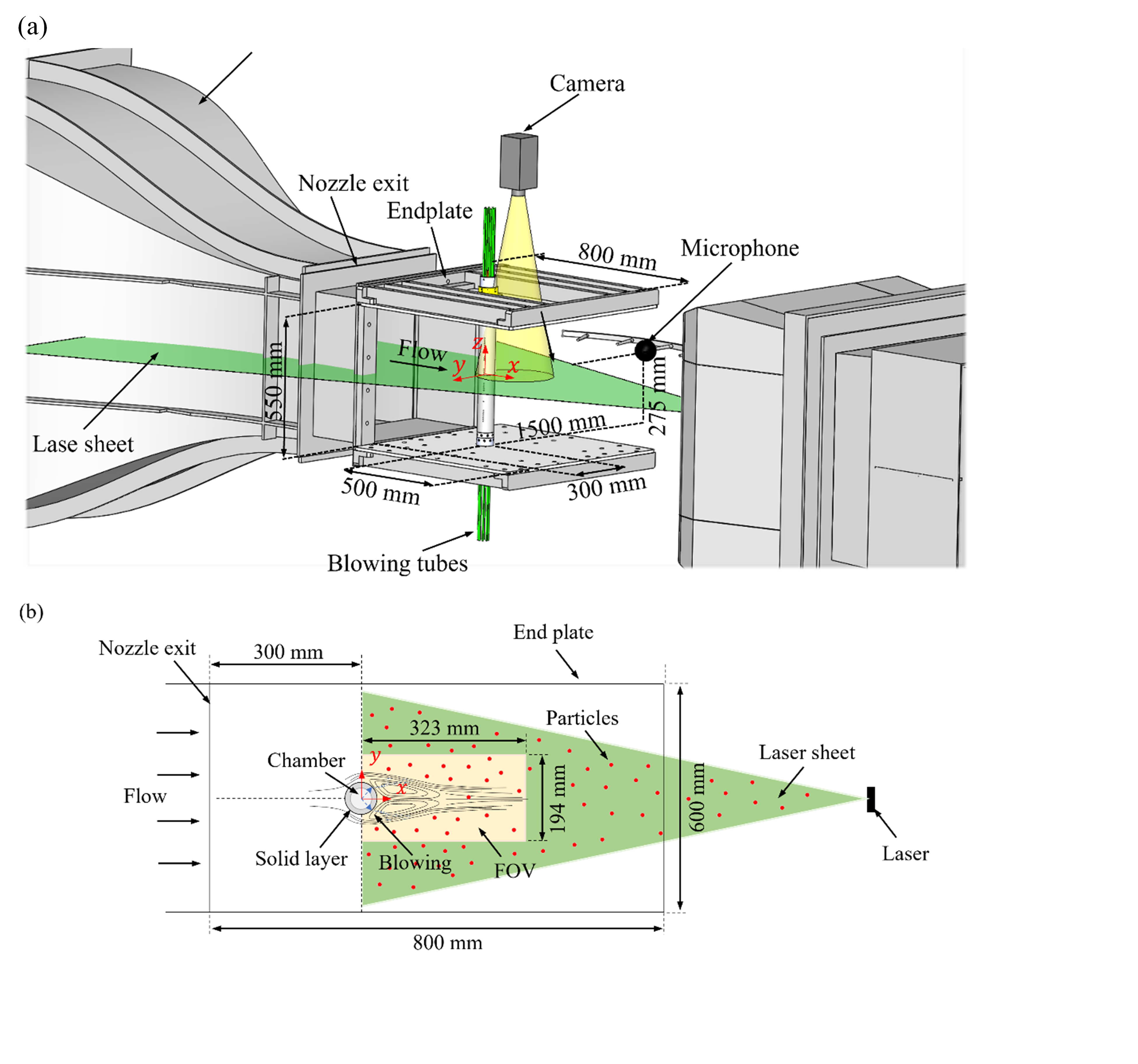Circular cylinders placed in uniform flow induce the phenomenon of vortex shedding, leading to structural vibrations and aerodynamic noise (Aeolian tone), which are commonly encountered in engineering applications such as pantographs of high-speed trains, tower structures of wind turbines, landing gears of aircraft, and many other applications. Vortex shedding not only triggers structural vibrations but also generates unstable lift force and increases drag force, posing a threat to the stability and safety of engineering structures.

Associate Professor Yu Liu’s research group from the Department of Mechanics and Aerospace Engineering at the Southern University of Science and Technology (SUSTech) has recently made important progress in the study of circular cylinder flow noise reduction mechanisms by local blowing. This work has investigated the influence of a method within the active control category, namely local blowing, on the flow around a cylinder, elucidating its noise reduction mechanism, and exploring the optimal blowing angles to enhance the efficiency of active control.
Their paper, entitled “Flow and aerodynamic noise control of a circular cylinder by local blowing”, has been published in the Journal of Fluid Mechanics.
This study employed synchronized measurement techniques of surface pressure, far-field noise, and Particle Image Velocimetry (PIV) to investigate the impact of local blowing techniques applied at different angles on the aerodynamic noise generated by flow around a cylinder. Ultimately, it was found that setting the local blowing angle at ±41° resulted in the most effective noise reduction.
The experiments described in this paper were conducted in the Aerodynamic Acoustics Wind Tunnel at SUSTech. A special circular cylinder was designed with active blowing capabilities and surface pressure measurement points. The blowing holes on the cylinder were utilized to eject air along the spanwise direction at specific azimuthal angles to investigate the effect of local blowing on vortex-induced noise. Finally, through synchronized measurements with a set up depicted in Figure 1, the direct influence of local blowing on the flow field was evaluated, thereby revealing the mechanisms behind vortex shedding and noise generation.

Figure 1. Experiment set up
The experimental results indicate that local blowing can effectively alter the flow field structure around the cylinder, thereby influencing the shedding of wake vortices and the generation of aerodynamic noise. The experiment found that the optimal noise reduction effect at ±41° blowing angle is attributed to the reduction in the entrainment of vortices by blowing, leading to an enlargement of the vortex formation region, as depicted in Figure 2. The larger vortex formation region necessitates the feedback signals to expend more energy to traverse a longer distance before impinging on the cylinder surface, thereby weakening the surface pressure fluctuations and far-field noise.

Figure 2. Normalized instantaneous vorticity field and vorticity iso-surface at different times
This study experimentally verifies the feasibility of the local blowing method in controlling the shedding of vortices and aerodynamic noise around a cylinder, in particularly the local blowing angle of ±41°, by combining synchronized measurements of surface pressure, far-field noise, and wake flow field. The mechanism is summarized in Figure 3. This finding is significant in guiding the design of efficient fluid control and aerodynamic noise reduction methods.

Figure 3. Summary of the main flow characteristics and mechanism of local blowing
Senior Research Fellow Reza Maryami in Assoc. Prof. Yu Liu’s group is the first author of this paper. Assoc. Prof. Yu Liu is the corresponding author, with SUSTech as the first affiliation.
This study was supported by the National Natural Science Foundation of China (NSFC), Department of Science and Technology of Guangdong Province, and the Natural Science Foundation of Shenzhen Municipality.
Apart from the noise reduction mechanisms of local blowing, Prof. Liu’s group has also produced a series of original works recently on flow field numerical simulation, near-wall and far-field pressure measurements, and optimization of drag and noise reduction for SPCC, which have been published in the Journal of Sound and Vibration, Physics of Fluids, and Aerospace Science and Technology.
Paper link: https://doi.org/10.1017/jfm.2024.39
To read all stories about SUSTech science, subscribe to the monthly SUSTech Newsletter.
Proofread ByAdrian Cremin, Yingying XIA
Photo ByDepartment of Mechanics and Aerospace Engineering